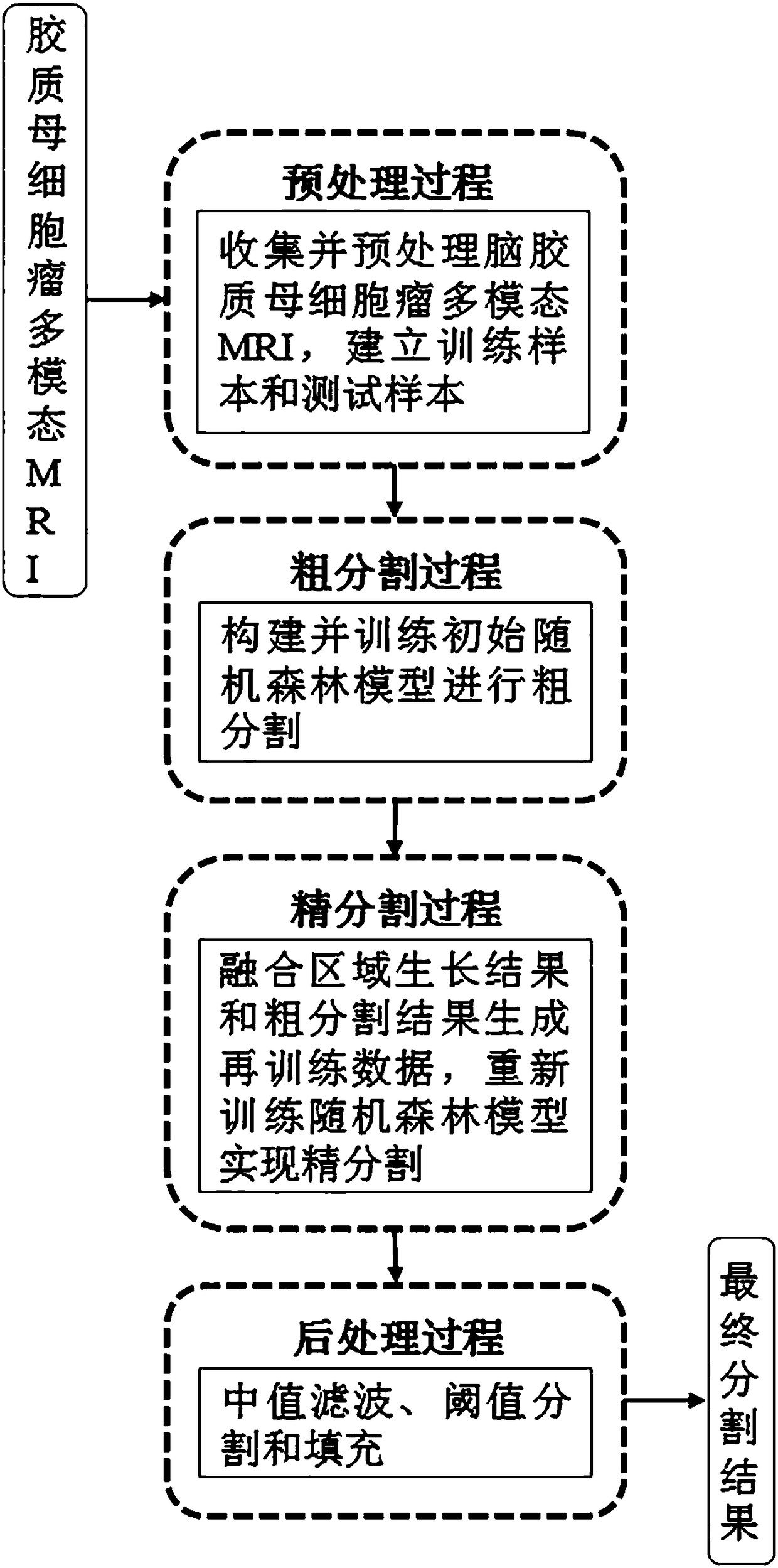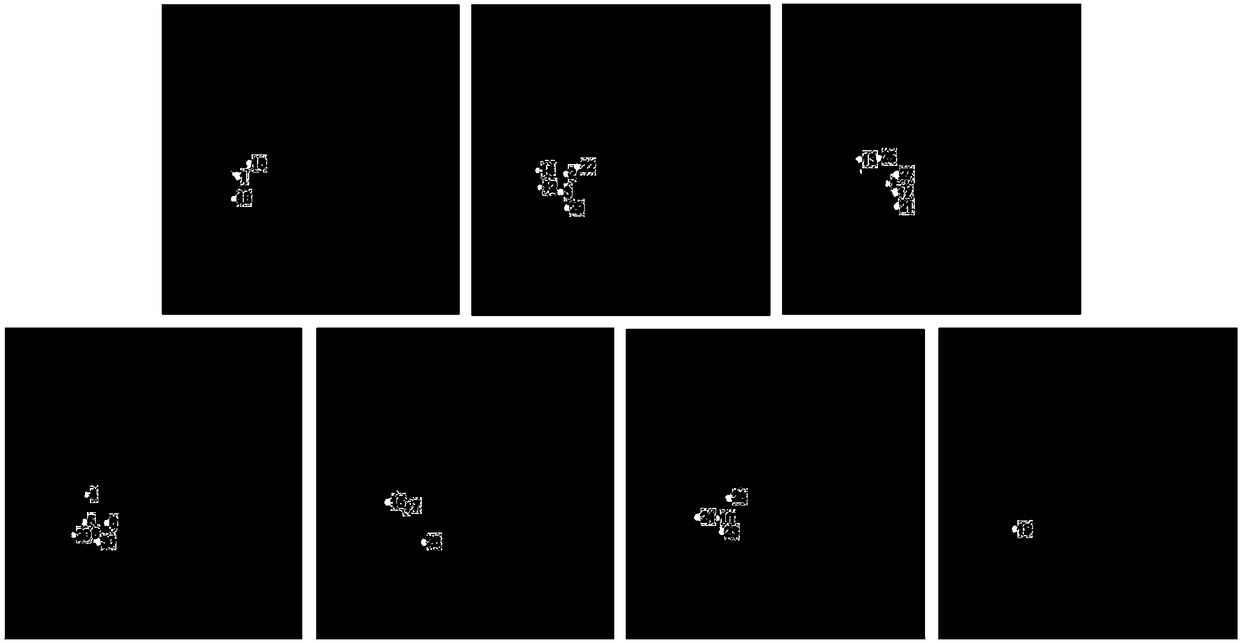Multimodal nuclear magnetic resonance image segmentation method for glioblastoma
A technology for glioblastoma and nuclear magnetic resonance images, which is applied in the field of digital medical image analysis and intelligent health management, can solve problems such as subdivision, and achieve the effect of reducing data acquisition and storage
- Summary
- Abstract
- Description
- Claims
- Application Information
AI Technical Summary
Problems solved by technology
Method used
Image
Examples
Embodiment 1
[0074] Embodiment 1, the multimodal nuclear magnetic resonance image segmentation method of brain glioblastoma, such as Figure 1-6 As shown, the multimodal nuclear magnetic resonance image (hereinafter referred to as MRI for short) includes three modal image information of T1W image before contrast agent injection (T1), T1W image after contrast agent injection (T1c), and FLAIR image.
[0075] According to the method of random forest and region growing, the present invention divides the MRI image of the brain into normal tissue area, necrosis area, active tumor area, T1 abnormal area (excluding necrosis area and active tumor area) and FLAIR abnormal area (excluding Including necrosis area, active tumor area and T1 abnormal area) 5 parts, there is no intersection area in the above 5 segmentation areas. Random forest has the characteristics of few parameters that need to be adjusted, high computing speed, strong anti-noise ability and no over-fitting phenomenon.
[0076] Since ...
PUM
 Login to View More
Login to View More Abstract
Description
Claims
Application Information
 Login to View More
Login to View More - R&D
- Intellectual Property
- Life Sciences
- Materials
- Tech Scout
- Unparalleled Data Quality
- Higher Quality Content
- 60% Fewer Hallucinations
Browse by: Latest US Patents, China's latest patents, Technical Efficacy Thesaurus, Application Domain, Technology Topic, Popular Technical Reports.
© 2025 PatSnap. All rights reserved.Legal|Privacy policy|Modern Slavery Act Transparency Statement|Sitemap|About US| Contact US: help@patsnap.com



